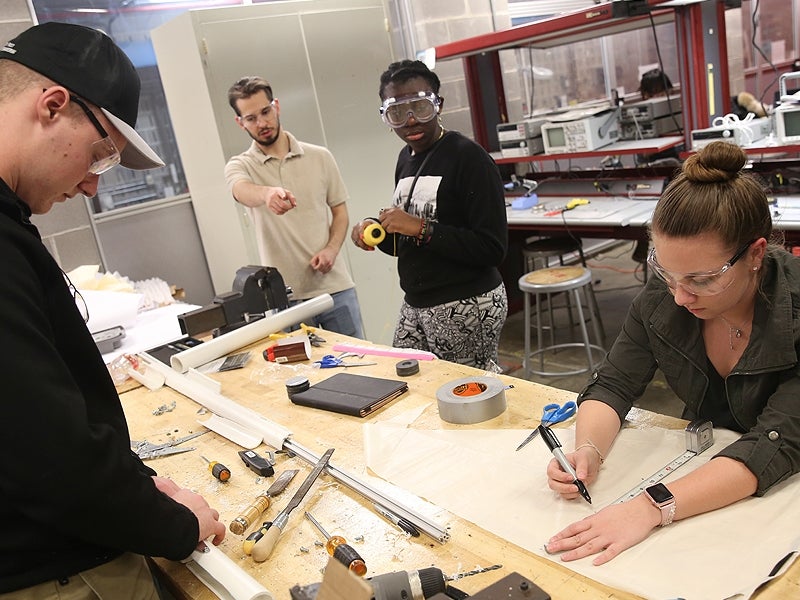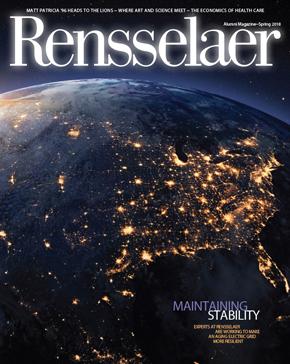
ENGINEERING
Design Competition Focuses on Aiding People With Disabilities

“Based on our reputation, undergraduate students from some of the very best schools in the Northeast came to Rensselaer. We learned from them, they learned from us; and we all made contributions to aid people with disabilities.”
— John Tichy
A hypertonic grip expander for individuals with cerebral palsy and stroke patients, a chair for autistic students, and an independent lifting device for quadriplegic individuals were the winning designs created by teams of undergraduate students from colleges and universities in the Northeast during the inaugural Engineering Innovation for Society (EIS) student design competition held this winter at Rensselaer.
At Rensselaer, students take on design challenges for industry, service organizations, or entrepreneurs. Working in multidisciplinary teams, and coached by a professor and project engineers with extensive industrial experience, students formulate the problems and conceptualize designs. They work to build prototypes and test their solutions in a fabrication lab with state-of-the-art machining equipment, 3D printers, and other devices.
With the launch of the annual Engineering Innovation for Society student design competition, undergraduate students from other universities had the opportunity to visit Rensselaer to experience the engineering workplace of the 21st century — and to help people along the way through their designs. This year’s inaugural competition included students from colleges and universities in the Northeast, including Columbia, George Washington University, Parsons School of Design, MIT, Stevens Institute of Technology, the United States Military Academy, University of Buffalo, University of Connecticut, University of Massachusetts-Amherst, University of New Hampshire, Worcester Polytechnic Institute, Yale, and York College of Pennsylvania. From January 11 to 14, students were assigned to teams and worked on various design projects for individuals who have disabilities, provided by the Center for Disability Services of Albany, New York.
“We have long been recognized as a leader in design, producing the very best engineers for the current workplace,” says John Tichy, tribology expert and professor in the Department of Mechanical, Aerospace, and Nuclear Engineering. “Now we’re expanding our influence, in keeping with The New Polytechnic, to motivate and engage students to address grand challenges, enabling cross-fertilization in new disciplines and with the very best collaborating institutions. Based on our reputation, the undergraduate students from some of the very best schools in the Northeast region came to Rensselaer. We learned from them, they learned from us; and we all made contributions to aid people with disabilities.”
“Using a rapid design paradigm that has been seen in hackathons and makeathons, our primary goal in creating EIS is to bring inventive students to the Rensselaer campus, to introduce them to all aspects of design and prototyping, while also creating a space for them to use our facilities, and work with our faculty and staff in the School of Engineering, to develop engineering solutions to real-world practical problems,” he says.
Student projects — which were mechanical in nature — were evaluated both on conceptual design and prototyping. Prizes awarded included $10,000 to the winning team, $4,000 to the second-place team, and $2,000 to the third-place team.















